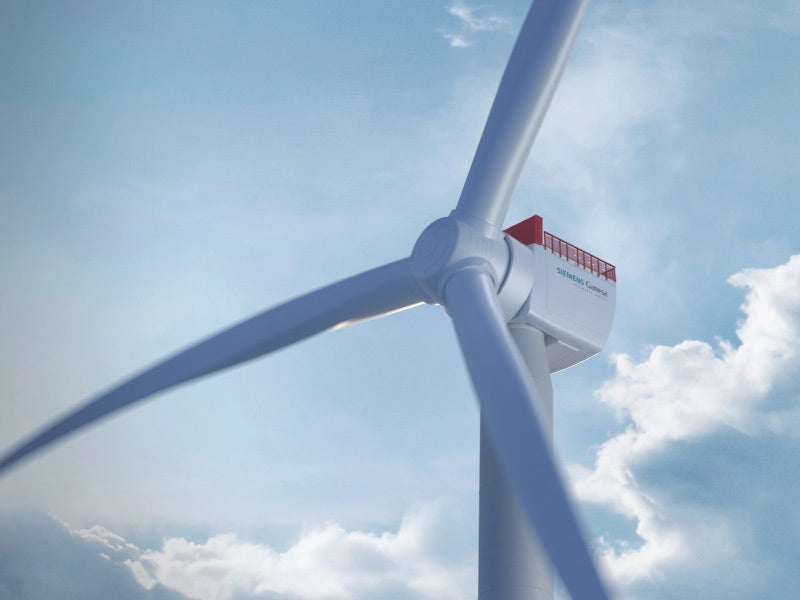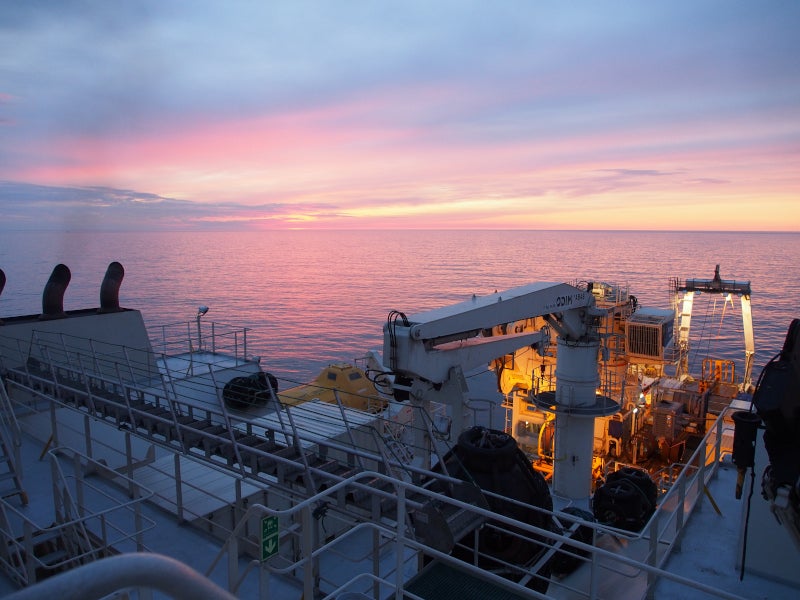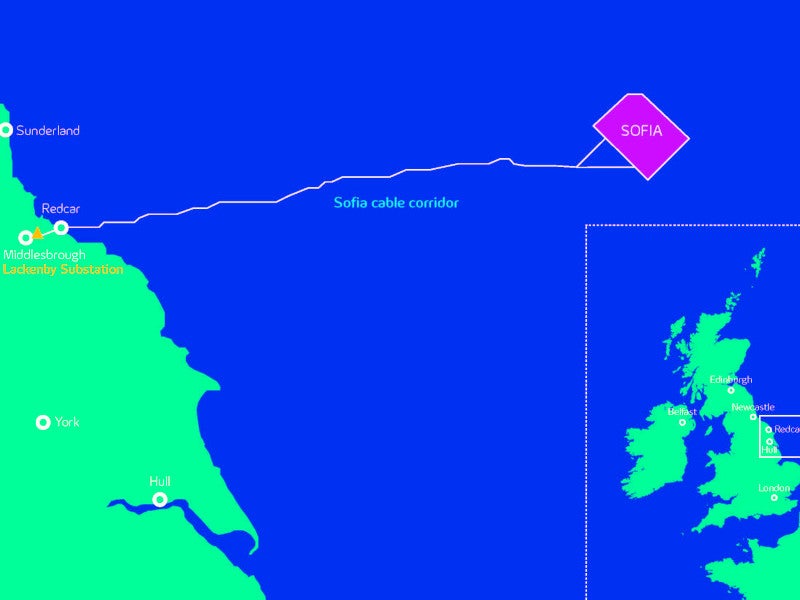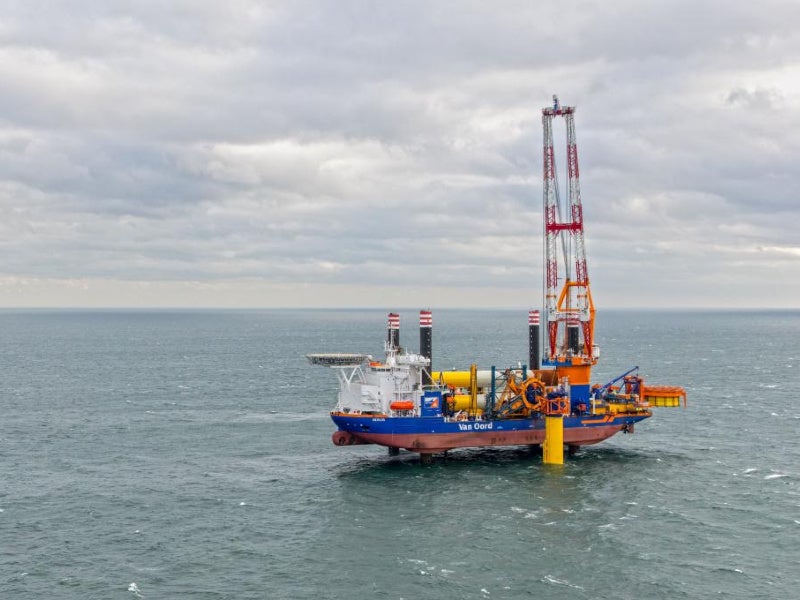Sofia offshore wind farm is a 1.4GW wind farm being developed offshore UK. The wind farm will supply power to approximately 1.2 million UK households at a rate of 5.4 terawatt-hours a year, contributing nearly half of the annual electricity requirements of the north-east UK.
The project is being developed with an estimated investment of £3bn ($3.7bn). It is 100% owned by Innogy, now part of RWE, and is the largest project in its development portfolio.
The financial investment decision (FID) for the project was made in March 2021, while the official ground-breaking for the project took place in July 2021.
Offshore work is expected to begin in 2023, and the wind farm is expected to become fully operational in 2026.
Sofia offshore wind farm location
The Sofia offshore wind farm will be located on Dogger Bank, 195km off the UK coast in the central North Sea. It is close to Dogger Bank C, the third phase of the Dogger Bank Wind Farm.
The 593km² site provides excellent wind conditions with relatively low water depths of between 21m and 36m.
Sofia wind farm details
The Sofia wind farm will include 100 turbines, an offshore converter station, onshore electrical infrastructure, and inter-array and export cables. The offshore platform will include a 17,000t topside and jacket foundation structure.
The wind farm will employ Siemens Gamesa Renewable Energy’s SG 14-222 DD offshore wind turbines. The 14MW, 262m-tall turbine model provides 25% more power than the next largest model.
The turbine’s 108m-long carbon and fibreglass IntegralBlade is cast in one piece, using Siemens Gamesa’s blade technologies. The 222m-diameter rotor sweeps an area of 39,000m², equivalent to approximately 5.5 standard football pitches.
The SG 14-222 turbine uses the Siemens Gamesa Direct Drive technology, which provides operational stability and high availability with minimal associated costs and risks.
Each turbine will be installed on a monopile and transition piece foundation, where the monopile is securely driven into the seabed.
Power transmission details
The power will be transported from the turbines to the wind farm’s offshore converter platform by a network of 370km of inter-array cables. The electricity will then be converted from 66kV alternating current (AC) to 320kV direct current (DC).
The electricity will be transported to the shore through two 220km export cables, which will form a single high-voltage direct-current (HVDC) circuit and make landfall between Redcar and Marske-by-the-Sea.
Two 7km DC onshore cables, forming a single HVDC circuit, will then transport the electricity to an onshore converter station, which will be constructed near Lazenby, where it will be converted to 400kV. Thereafter, the power will be transmitted to the existing national grid substation at Lackenby through six 2km AC cables.
The electrical system will incorporate the eLumina™ HVDC Control System from GE Renewable Energy’s Grid Solutions.
Sofia wind farm construction details
The wind farm site underwent a final phase of a six-month pre-construction site investigation in June 2020.
A site investigation was completed by a multi-purpose vessel called Despina and the Fugro Scout survey vessel. Coastal survey vessels Fugro Seeker and Fugro Mercator carried out geophysical surveys along the nearshore export cable corridor, off the coast of Redcar in Teesside.
Fugro Pioneer and Despina concluded export cable route surveys. Fugro Seeker and Fugro Mercator gathered data to inform the design of the export cable and installation methodology. The vessels completed the works by July 2020 with the support of a local guard vessel.
The information from the investigation was used to calibrate the array design and verify the installation of the turbine foundations, offshore converter platform and array cables.
A 29m-long jack-up vessel named Haven Seariser 2 was also employed for a six-month offshore site investigation in the nearshore area between Redcar and Marske-by-the-Sea.
The boreholes from the investigation, coupled with collected data from earlier surveys, were used to determine the final design and installation methodology for the landfall location of the main transmission cable.
Power offtake agreement
RWE signed a power purchase agreement (PPA) with multi-national electric power generation and utility company EDF to supply all the power generated from Sofia for 15 years.
Contractors involved
Siemens Gamesa was selected to manufacture, install and commission the turbines for the wind farm. The conditional order also includes a comprehensive service and maintenance contract.
The consortium of GE Renewable Energy’s Grid Solutions and Sembcorp Marine secured a contract worth £600m ($827.12m) to supply the HVDC electrical transmission system for the wind farm. The Grid Solutions business unit of GE will undertake the engineering, procurement, construction and installation (EPCI) of two HVDC converter stations, while Sembcorp is responsible for the design, construction, installation and commissioning of the offshore converter platform.
Prysmian was selected as the preferred supplier to design, supply, install and commission an HVDC cable system connecting the onshore and offshore converter stations.
Van Oord was named the preferred EPCI contractor for the wind farm project’s monopile foundations and array cables. The company plans to use its offshore installation vessel Aeolus for the monopile foundations installation, while the installation of array cables will be performed using cable-laying vessel Nexus.
Cadeler was contracted to transport and install the turbines at Sofia wind farm. The company is building two new X-class turbine installation vessels as part of the contract.
Heerema Marine Contractors was selected by Sembcorp Marine to transport and install the HVDC offshore converter platform Sleipnir, a semi-submersible crane vessel (SSCV). The installation is expected to take place in 2024.
Fugro provided geophysical and geotechnical services along with works on the wind farm array.







